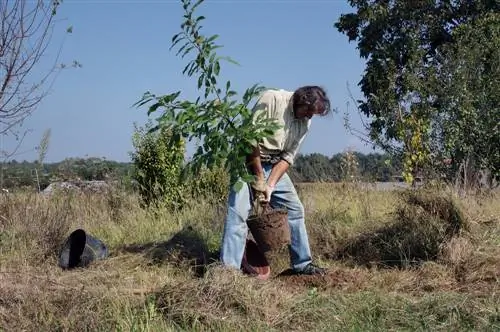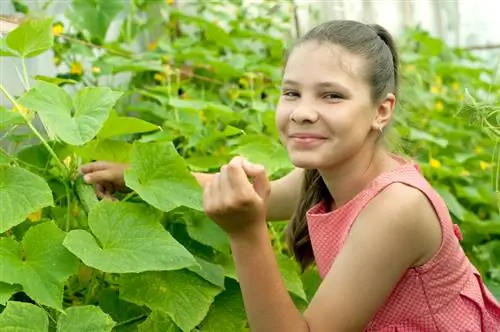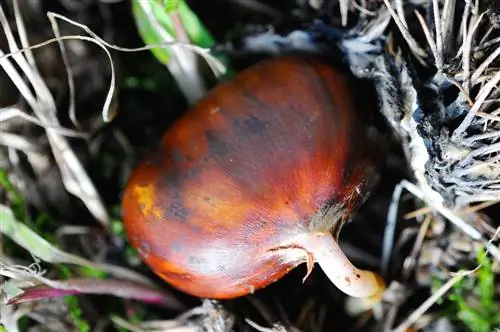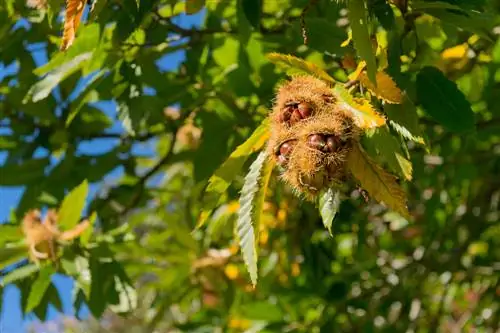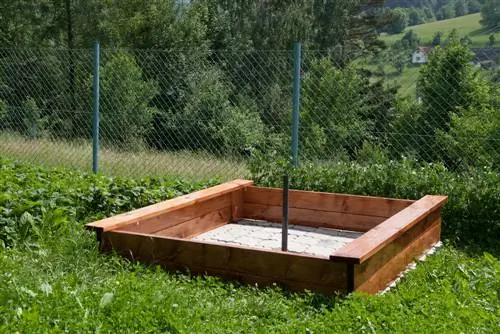- Author admin [email protected].
- Public 2023-12-16 16:46.
- Last modified 2025-01-23 11:21.
Chestnuts, as the chestnut fruits are also called, are delicious, but harvesting them in your own garden is quite a challenge. Neither the planting nor the subsequent care are particularly difficult to manage.
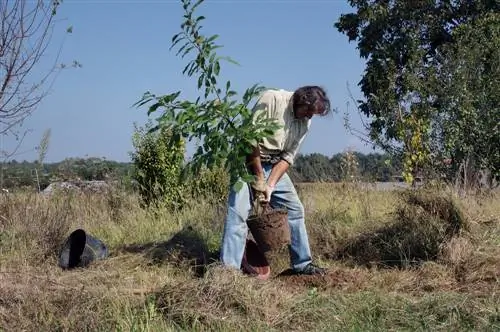
How do I plant chestnuts correctly?
To plant chestnuts successfully, choose a warm, bright location with humus-rich, permeable and slightly acidic soil. Plant at least two different varieties for better fertilization and pay attention to the correct planting depth and regular fertilization.
The ideal location
The sweet chestnut prefers a warm, bright location and a mild climate, even if it is actually frost-tolerant. Some varieties are quite sensitive to late frosts. If you live in a harsh region, then give the chestnut a protected place in your garden, preferably in the sun.
The best soil
The chestnut doesn't have any particularly high demands on the soil. However, it cannot tolerate long dry periods or constant waterlogging. A humus-rich, permeable soil is recommended. The sweet chestnut also doesn't particularly like lime, so the soil can be slightly acidic.
Planting correctly
To plant a chestnut you have to work properly. The larger the young tree, the more you can dig. The ideal planting hole is at least twice as large as the root ball of your sweet chestnut. The depth of the hole corresponds approximately to the height of the bale. The chestnut will then sit just as deep in the ground as before.
Don't forget to loosen the soil well, place the sweet chestnut in the planting hole and fill it up. A little horn shavings (€32.00 at Amazon) as fertilizer and some bark mulch to keep the moisture in the soil can't hurt. Be sure to water the chestnut thoroughly.
Water and fertilize the chestnut
A well-grown sweet chestnut hardly needs any additional water; it has a strong root system that can draw enough water from the ground. However, due to their high potassium requirements, regular fertilization is recommended. Good garden compost is completely sufficient.
Why should I plant several chestnut trees?
Although the sweet chestnut has both male and female flowers, they do not always bloom at the same time. However, this would be necessary for successful fertilization. If you have planted several chestnut trees, there will be enough flowers of both sexes available practically at all times. It is irrelevant which chestnut species the “companion trees” are. Ideally, however, they have slightly different flowering times.
Diseases and pests
The sweet chestnut can also suffer from diseases such as ink disease or chestnut bark cancer. Unfortunately, trees can also infect each other. Therefore, do not plant your chestnut near trees that are already infected.
The most important things in brief:
- warm bright location
- best suited: wine-growing region
- plant protected in harsh climates
- Soil neutral to slightly acidic, permeable and humic
- Planting hole diameter=twice the bale diameter
- Plant the chestnut as deep as it was before
Tip
If you have enough space in your garden, plant at least two sweet chestnuts, preferably different varieties. This is how you can increase your crop yield.

